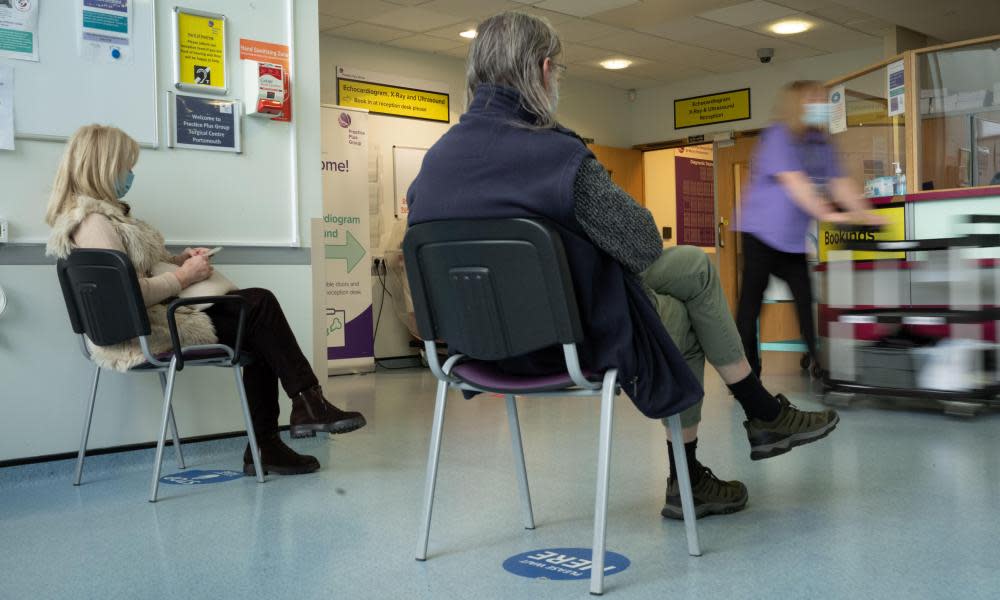Satisfaction with the NHS plummets to lowest level in 40 years

Satisfaction with the NHS has plummeted to a record low of just 29% amid intense public frustration with long waits for care, understaffing and lack of government funding.
The striking picture of deep and growing disenchantment with the health service is mirrored by a recent spike in dissatisfaction with the NHS overall to 51% – double what it was in just 2020 – as well as a range of key services including GP care (42%), dentistry (42%) and A&E (40%).
Opposition parties and the leader of Britain’s doctors claimed the findings, from a long-established annual survey of attitudes towards the NHS, were a “damning indictment” of the Conservatives’ handling of the service since they became the government in 2010.
Related: Decade of neglect means NHS unable to tackle care backlog, report says
The results, from the National Centre for Social Research (NatCen), show satisfaction with the NHS has collapsed from the record high 70% seen in 2010, the year Labour lost power, to 29% last year. That is the lowest level of satisfaction seen in the 40 years the research into public perceptions of the NHS has been undertaken.
Dissatisfaction with the service has more than doubled in just two years, from 25% in 2020 to 51% in 2022, a period marked by Covid-19’s arrival, the NHS suffering a worsening shortage of staff and growing numbers of patients – now 9 million across the UK – facing long waits for treatment.
“The NHS was one of the most respected health services in the world, but these damning findings show how years of underfunding and government neglect have reduced it to a mere shadow of what it could, and should, be,” said Prof Philip Banfield, the leader of the British Medical Association.
Satisfaction with the NHS has collapsed since 2020, according to NatCen’s findings, which were based on a survey of 3,362 people in England, Scotland and Wales. The 29% satisfaction seen last year is down seven percentage points on the 36% seen in 2021 and 24 points lower than the 53% recorded in 2020.
Worryingly for NHS leaders, that sharp fall in satisfaction was seen across all ages, income groups, sexes and supporters of the different political parties, according to an analysis of NatCen’s findings by experts at the Nuffield Trust and King’s Fund health thinktanks.
Asked why they were dissatisfied, participants identified the length of time it takes to get a GP or hospital appointment (69%) as their main reason, followed by “not enough NHS staff” (55%) and also that “the government doesn’t spend enough money on the NHS” (50%).
A separate panel of 1,187 of the 3,362 respondents who were quizzed about specific types of NHS provision found that just 27% are satisfied with NHS dentistry, 30% with A&E services, 35% with GP care and hospital inpatient services and 45% with outpatient care. All were the lowest levels seen since NatCen began probing public attitudes to the NHS in 1983.
“These sad but significant findings show the public’s frustration with the status quo around health and social care and should act as a red flag to the government”, said Matthew Taylor, the chief executive of the NHS Confederation.
But, he added: “The fact that public satisfaction with the NHS is at its lowest level in 40 years should not be seen as a judgment on the efforts of frontline staff to recover services in the wake of the pandemic but rather a sign that the NHS is not being given what it needs to fully deliver.”
The public seem to recognise that “the NHS has had its hands tied”, Taylor added.
However, more positively for the NHS, the public still support the founding principles of the service, which will celebrate its 75th anniversary on 5 July. Large numbers said they were satisfied with the NHS because care is free at the point of use (74%), quality of care is good (55%) and it offers a good range of services and treatments (49%).
Dan Wellings, a senior fellow at the King’s Fund and co-author of the thinktank’s analysis, said: “The public do not want a different model of healthcare; they just want the current model to work.”
Meanwhile, in a significant move in the ongoing NHS pay dispute, Jeremy Hunt has conceded the Treasury will have to find extra money to fund the pay offer to health staff, though the Department of Health and Social Care will also be forced to make savings.
Health unions are now consulting their members on the offer, which includes a one-off bonus of up to 8.2% for this year and a pay rise of 5% from April, plus more for the lowest-paid.
With existing budget plans only allowing for a 3.5% rise, ministers had previously declined to say how the offer would be funded, stoking fears of fresh cuts to under-pressure services.
In a statement on Tuesday, the health secretary Steve Barclay said: “I’m working with the Treasury to ensure my department has the money it needs to fully fund this pay offer, which will include additional funding and reprioritising existing budgets.”
Wes Streeting, the shadow health secretary, said: “After 13 years of Conservative mismanagement, the public has lost faith that the NHS will be there for them when they need it. People are just praying they don’t have to dial 999 or go to A&E.”
The Department of Health and Social Care did not directly respond to NatCen’s findings.

 Yahoo News
Yahoo News 
